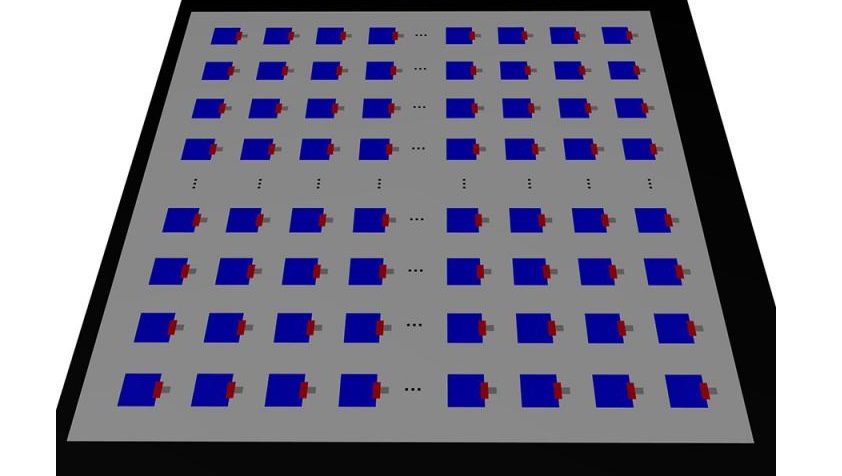
This diagram shows graphene-based nanoantennas. Image credit: University at Buffalo
Wireless communication networks in the gigahertz band could open up new high-speed communication capabilities and extremely small Internet of Things devices.
Most wireless communication uses radio waves, but the airwaves are getting crowded. Tapping into the terahertz band, another area of the electromagnetic spectrum, could open up more and faster communication.
“For wireless communication, the terahertz band is like an express lane. But there’s a problem: there are no entrance ramps,” says Josep Jornet, PhD, assistant professor in the Department of Electrical Engineering at the University at Buffalo School of Engineering and Applied Sciences.
Jornet and co-investigators Jonathan Bird and Erik Einarsson are working on “the Internet of Nano-Things,” nanoscale radios made of graphene and semiconducting materials that could speed up IoT devices for computing, medical devices, civil engineering, and other industries that can benefit from high-definition, real-time streaming.
“We’ll be able to create highly accurate, detailed, and timely maps of what’s happening within a given system. The technology has applications in health care, agriculture, energy efficiency — basically anything you want more data on,” Jornet said.
In particular, using graphene sheets can help detain the power density of terahertz waves over long distances, a problem that Jornet has been working on since 2009. Electrons move 50 to 500 times faster in graphene than they do in silicon, allowing graphene strips just tens of nanometers wide and one micrometer long to transmit and receive terahertz waves at speeds of one terabit per second or more.
However, in order to make practical radios with this material the graphene needs to be combined with semiconducting materials like indium gallium arsenide, plus generators and detectors that can interface with those components. Jornet and his colleagues at the Signals, Communications and Networks research group and Solid State Electronics research group will continue to try to make nanoscale graphene IoT devices practical.
Filed Under: M2M (machine to machine)




